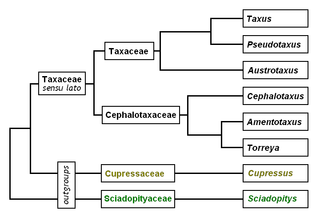Sugarplum is a common name for several plants and may refer to:
- Amelanchier canadensis , native to eastern North America
- Diospyros virginiana
- Prune plum (Prunus domestica subsp. domestica)
Sugarplum is a common name for several plants and may refer to:

A plum is a fruit of some species in Prunus subg. Prunus. Dried plums are called prunes.

A prune is a dried plum, most commonly from the European plum. Not all plum species or varieties can be dried into prunes. A prune is the firm-fleshed fruit (plum) of Prunus domestica varieties that have a high soluble solids content, and does not ferment during drying. Use of the term "prune" for fresh plums is obsolete except when applied to varieties of plum grown for drying.

The greengages are a group of cultivars of the common European plum. The first true greengage came from a green-fruited wild plum which originated in Iran (Persia). Greengages are grown in temperate areas and are known for the rich, confectionery flavour. They are considered to be among the finest dessert plums.

The damson or damson plum, also archaically called the "damascene", is an edible drupaceous fruit, a subspecies of the plum tree. Varieties of insititia are found across Europe, but the name damson is derived from and most commonly applied to forms that are native to Great Britain. Damsons are relatively small ovoid plum-like fruit with a distinctive, somewhat astringent taste, and are widely used for culinary purposes, particularly in fruit preserves and jams.

Prunus salicina, commonly called the Japanese plum or Chinese plum, is a small deciduous tree native to China. It is now also grown in fruit orchards in Vietnam, Korea, Japan, Israel, the United States, and Australia.

The bullace is a variety of plum. It bears edible fruit similar to those of the damson, and like the damson is considered to be a strain of the insititia subspecies of Prunus domestica. Although the term has regionally been applied to several different kinds of "wild plum" found in the United Kingdom, it is usually taken to refer to varieties with a spherical shape, as opposed to the oval damsons.
Service tree can refer to:
Prunus insititia may refer to:
The common name myrobalan can refer to several unrelated fruit-bearing plant species:
Hog plum is a common name for several plants that produce edible fruit, and may refer to:
Leopard lily is a common name for several plants and may refer to:
Sorb apple may refer to several trees, or their fruits, in the genus Sorbus:
Black plum is a common name for several plants and may refer to:

Prunus domestica, the European plum is a species of flowering plant in the family Rosaceae. A deciduous tree, it includes many varieties of the fruit trees known as plums in English, though not all plums belong to this species. The greengages and damsons also belong to subspecies of P. domestica.
Domestica may refer to:
Damson plum may refer to:
C. domestica may refer to:

Yew is a common name given to various species of trees.

The prune plum is a fruit-bearing tree, or its fruit. It is a subspecies of the plum Prunus domestica. The freestone fruit is similar to, but distinct from, the clingstone damson and is especially popular in Central Europe.